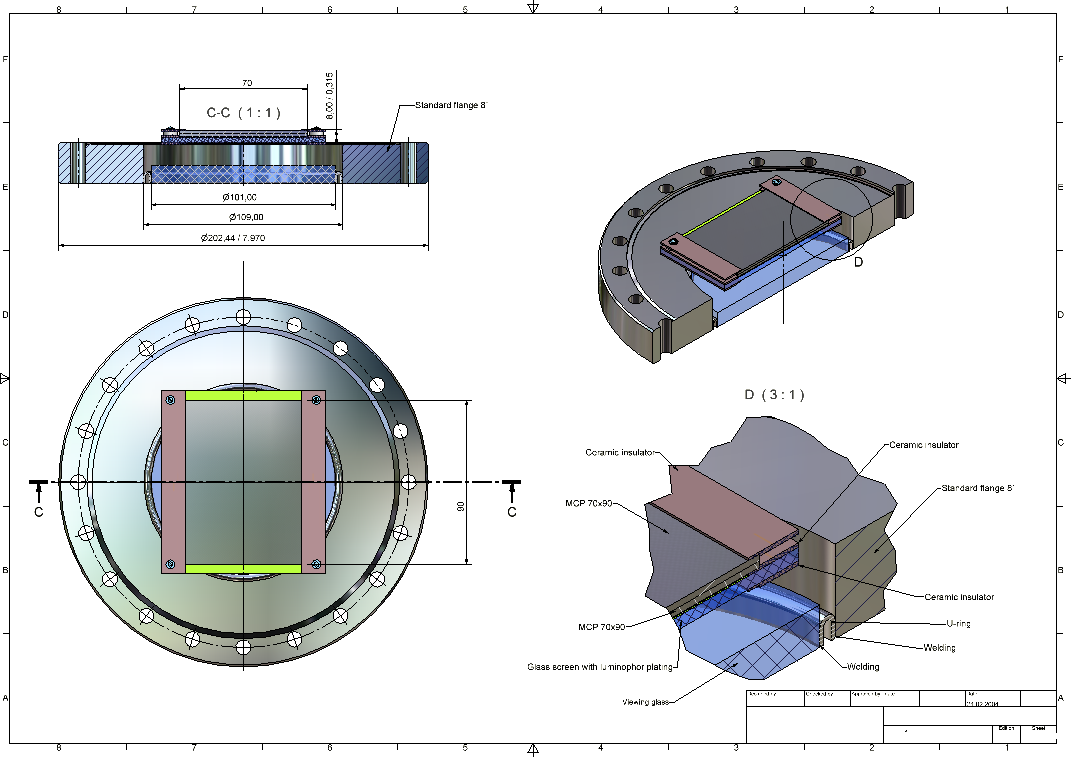
Open Microchannel Plate Detector MCP-GPS 70x90
Del Mar Photonics - MCP home - Request a quote
MCP + phosphorous screen for imaging of XUV radiation (14eV- 160-eV) in high harmonics experiments

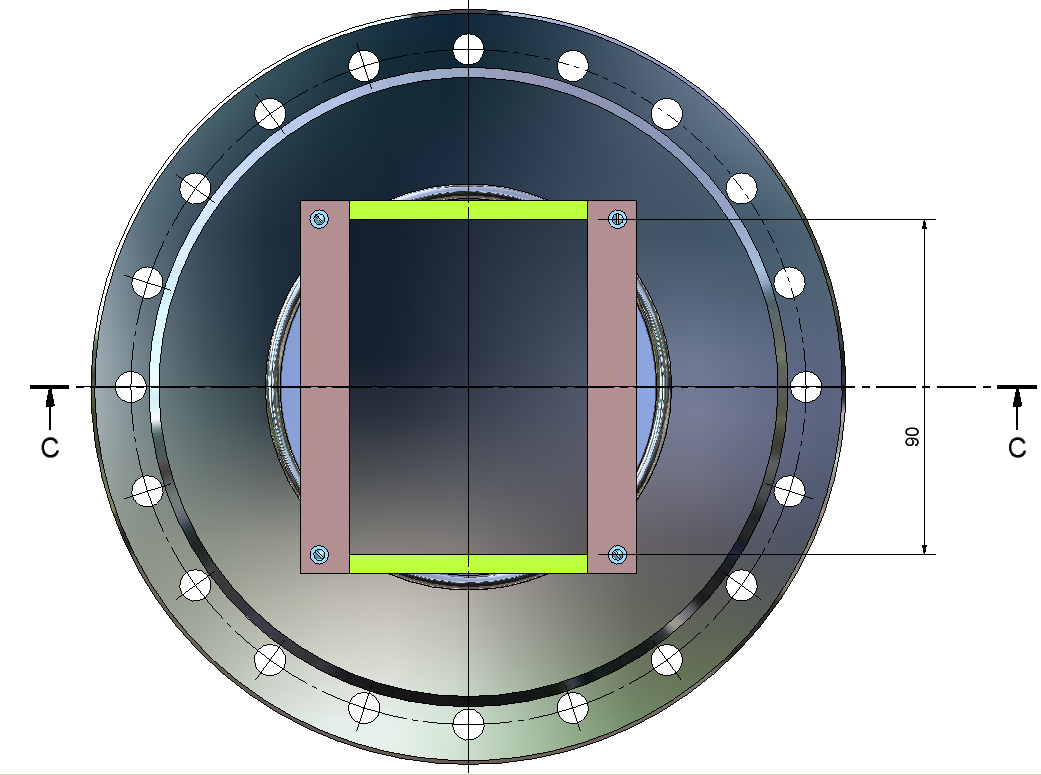
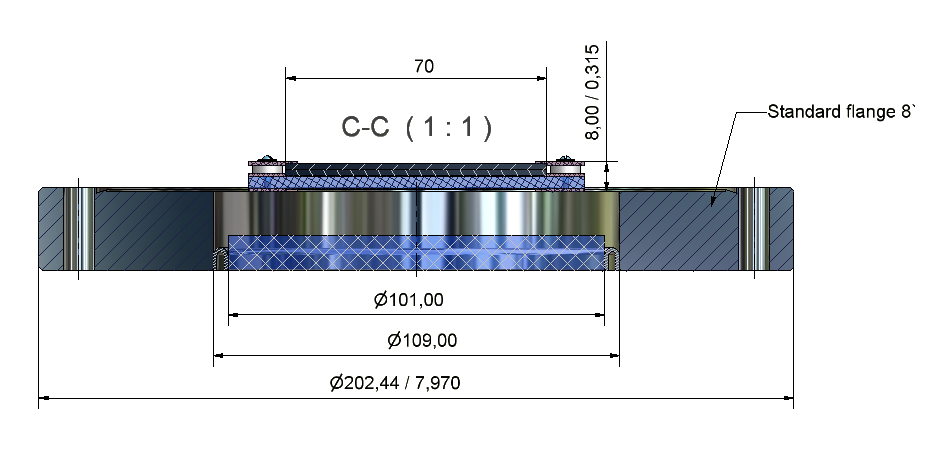
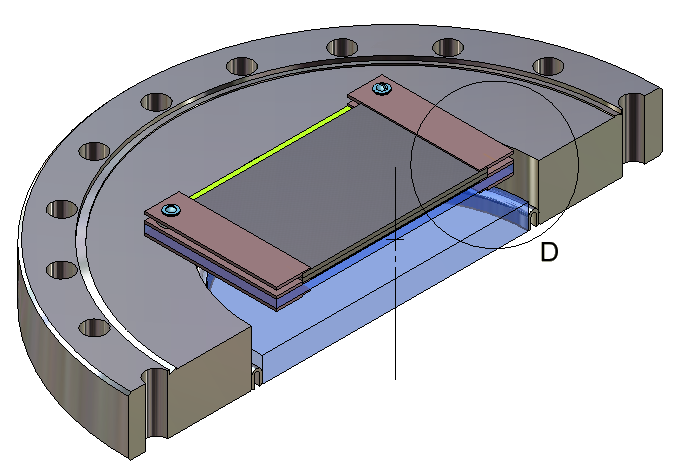
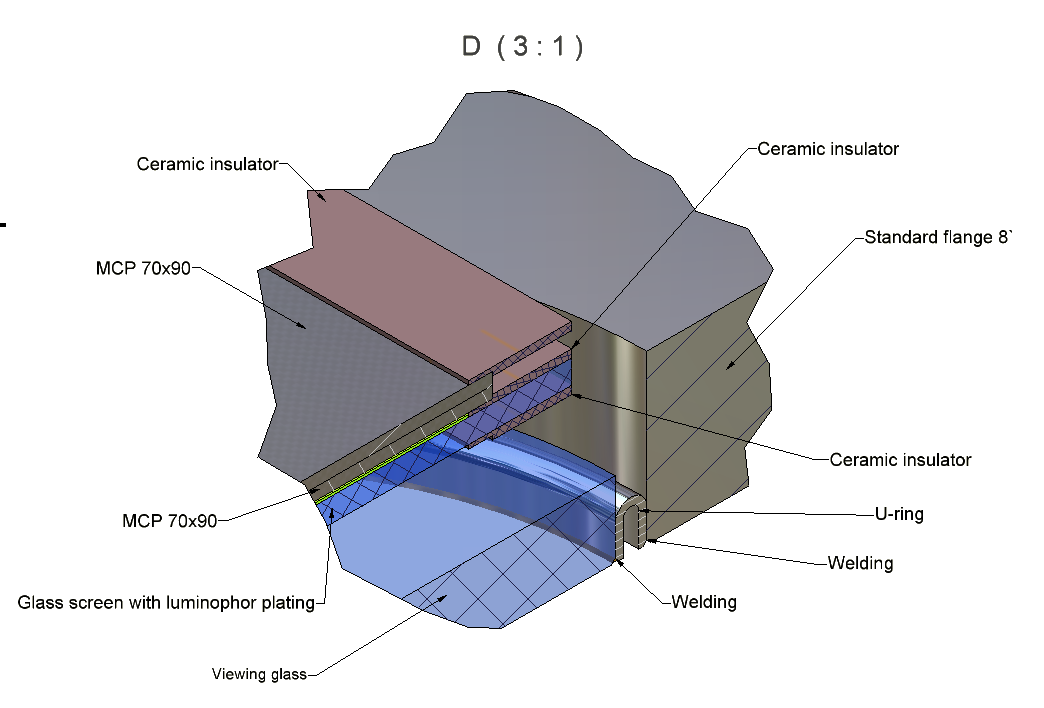
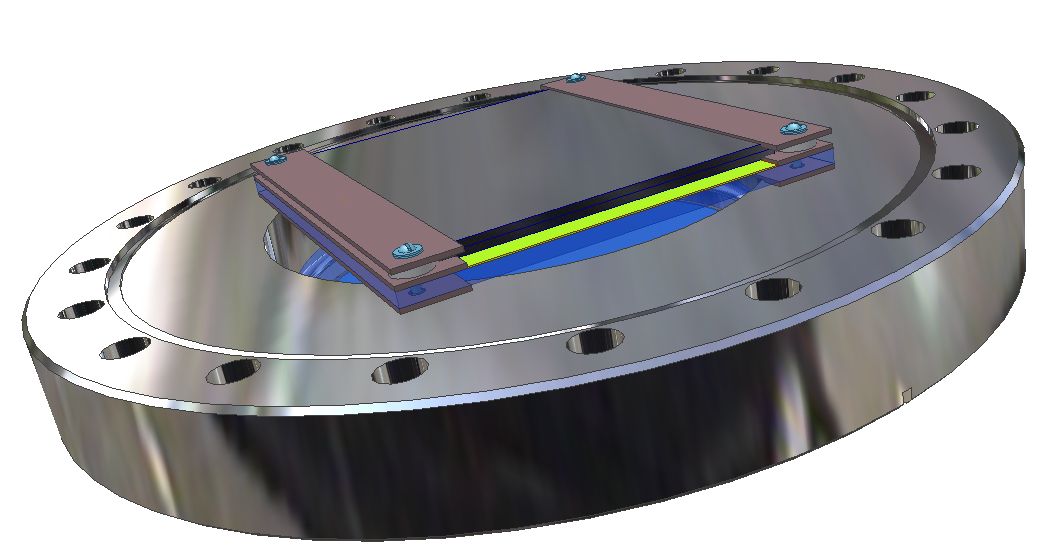
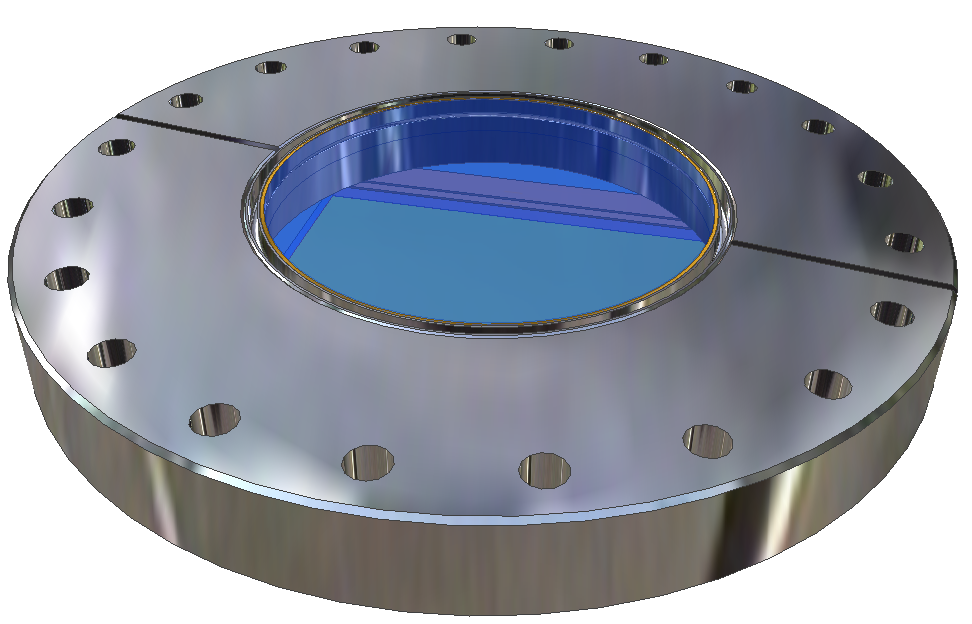
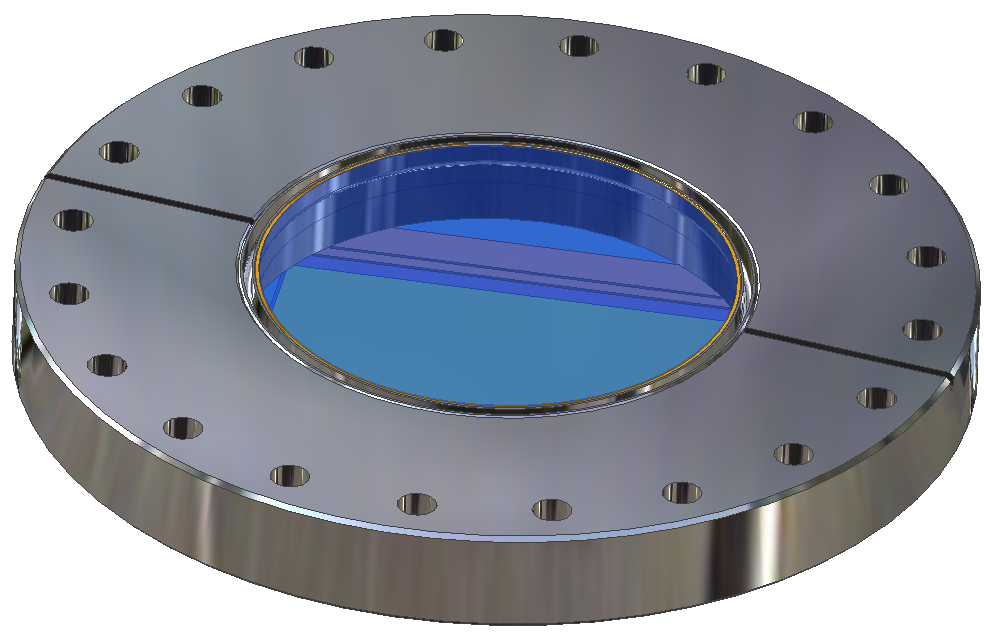

Attosecond pulse generation and detection (featured customer)
The conjecture of producing a train of attosecond pulses using high-order
harmonic generation (HHG) has been put forward almost 10 years ago. More
recently, detailed theoretical investigations have confirmed this possibility
and shown that it is indeed conceivable to generate a train or even a single
attosecond pulse. The method utilizes the coherent properties of the high
harmonics produced in the interaction of laser light with atoms in a manner
analogous to the short pulse production in mode-locked lasers. Nonetheless, it
is only now that experimental evidence has started accumulating, indicating that
the femtosecond barrier towards attosecond pulses might have fallen. Provided
that they are well characterized, they may serve as the fastest camera, able to
record frozen snapshots of ultra fast electron dynamics. Consequently, they are
of great interest to a variety of scientific areas including atomic, molecular,
solid state and plasma physics, as well as to material science. The challenging
problem is to find a measuring technique that unequivocally verifies the
existence of attosecond pulses and it provides a precise temporal
characterization.
In principle, one should be able to apply the well known techniques from
femtosecond pulse metrology like successive optical auto-correlations of
increasing order to obtain the answer, i.e., characterize the attosecond pulse
and ultimately measure its exact duration. The difficulty arises from the fact
that, in contrast to femtosecond, the attosecond pulses are necessarily in the
UV-XUV spectral range, they are orders of magnitude weaker and spectrally much
broader. In case of femtosecond pulses with frequencies in the visible spectral
region, an amplitude splitting interferometer (Michelson or Mach-Zehnder) in
conjunction with a second harmonic crystal is commonly used. Both basic
components, interferometer and detector, have to be appropriately modified or
adapted for operation in the XUV spectral region. In this case, a beam splitting
interferometer using a free-standing transmission grating, adapted for operation
in the 10 - 100 nm spectral region is ideally suited for the temporal
characterization of attosecond pulses. In conjunction with focusing mirrors,
this interferometer can be made to exhibit dispersion characteristics that allow
measurement of pulses with few as duration [(see: E. Goulielmakis et al., Appl.
Phys. B 74, 197(2002)] .
The idea of utilizing a grating as a beam splitter is based on the natural
splitting of an incident beam through dispersion into different orders. This is
depicted in the figure above where a monochromatic beam incident on the grating
is diffracted into one zeroth order and two first orders (for simplicity, only
one is shown). Two mirrors reflect the zeroth order and one of the first orders
straight back through the grating. In the second passage through the grating,
the first order of the primary zeroth order automatically propagates in the same
direction as the zeroth order of the primary first order. Because of the equal
number of dispersions into the first and zeroth order involved, the splitting of
the original beam in the two arms of the interferometer is exactly 50%
independently of the efficiency of the grating. The transmission grating
interferometer exhibits an additional feature, namely it spectrally analyzes the
incident radiation. This property is especially desirable in case of gas
harmonics produced by relatively long laser pulses where the spectrum is
discrete. Then, the isolation of a single harmonic or a group of harmonics can
be easily implemented by simple geometrical obstacles like apertures or
knife-edges.
The first experimental utilization of this grating based interferometer was the
characterization with respect to its duration and spatial coherence of the third
harmonic of a 1kHz repetition rate Ti:sapphire laser system delivering ~50fs
pulses . The harmonic was generated in an Ar gas cell and its temporal
characterization was performed by measuring the second order interferometric as
well as the intensity AC traces in a second cell containing gaseous Toluene
(C7H8). The results are depicted in the figure below along with the Fourier
spectrum of the autocorrelation trace.
To assess the overall performance of the grating Michelson interferometer, a
measurement was undertaken of the TH pulse duration using a conventional
Michelson interferometer with a 1mm thick fused silica beam splitter. The total
optical path from source to detector through optical components and air was
nearly the same for both interferometers. Within the accuracy of the
measurement, both interferometers gave the same value for the TH pulse duration.
This demonstrate the applicability of this new type of interferometer in the XUV
spectral region and therefore its appropriateness for higher harmonics
autocorrelation measurements [see: N. A. Papadogiannis et al. Opt. Lett., 27,
1561(2002)]
The observation of a non-linear process, e.g. multiphoton ionization or
inner-shell transition, induced by short-pulse coherent XUV radiation, such as
the high-order harmonics of fs-laser radiation from rare gases, has been a
challenging problem for a long time now. This is not only because of the
interesting new physics inherent to the process, but also because it opens up
the possibility of applying well established approaches in fs-laser pulse
metrology to short pulses in the XUV wavelength region by providing an
appropriate non-linear detector. Thus, second or higher order auto-correlation
techniques can be appropriately modified for XUV radiation and utilized for the
temporal characterization of individual higher-order harmonics or of a harmonic
superposition.
In an experiment performed with the first module of the 10 Hz Ti:sapphire laser
system at Max-Planck-Institut für Quantenoptik, ATLAS, delivering 130 fs long
pulses, two-photon ionization of He induced by a broadband XUV spectrum
consisting of the 7th harmonic (~113 nm) to the 13th harmonic (~61 nm) of a
Ti:sapphire laser was observed. In terms of the perturbation theory, this is a
second order processes induced by the shortest wavelength and broadest bandwidth
ever reported so far. A schematic of the experimental set-up used is shown in
the previous figure. The laser beam is focused with a 1.5 m lens into a Xenon
gas-jet in which the harmonics are generated. A Kirckpatrick-Baez focusing
system is introduced in the propagation axis of the XUV radiation. This
comprises two gold-coated spherical mirrors of 5 m radius of curvature one fixed
in the x-y plane and the other in the x-z plane. The fundamental is filtered out
by a 0.16 Ám thick Indium filter, which also selects the 7th to 13th harmonic.
At focus of the Kirckpatrick-Baez system, the XUV light interacts with a second
pulsed He gas-jet. The ions resulting from two-photon ionization by the harmonic
beam are detected by a time of flight energy analyzer as shown in the figure of
the setup. The harmonics are monitored simultaneously with the ionization signal
by means of an XUV monochromator coupled to the exit of the ionization chamber.
The He+ ion signal was thus measured as a function of the total XUV intensity
and the results of this measurement in a log-log scale are shown in figure to
the left. The slope of a fitted straight line is 2.3▒0.3. Further, solving the
Time Dependent Schrödinger Equation for He in a coherent polychromatic field,
the He+ ion yield was calculated as a function of the total XUV intensity and
found to be in reasonable agreement with its measured value. These results
establish the feasibility of a second order auto-correlation measurement of
superposition of harmonics and thus open up the prospect of conducting second
order auto-correlation measurements of coherent superposition of higher
harmonics aiming at the unambiguous quantitative temporal characterization of
attosecond pulse trains.
High Harmonics publications
1 - 2 - 3 - 4 - 5 - 6 - 7 - 8 - 9 - 10 - 11 - 12 - 13
Search Results
Isolated attosecond pulses from ionization gating of
high-harmonic
High-Harmonics Chirp and Optimization of
Attosecond Pulse Trains
Connecting Attosecond Science and XUV FEL
Research
Attosecond Time-Scale Intra-atomic Phase Matching of
High Harmonic
Attosecond Transient
Absorption of High Order Harmonics in Helium
Attosecond Angle-Resolved Photoelectron Spectroscopy
Atto-Second Electron Beams Generation and Characterization
Attosecond Double-Slit Experiment
Product Data Sheets
Del Mar Photonics Product brochures - Femtosecond products data sheets (zip file, 4.34 Mbytes) - Del Mar Photonics
Send us a request for standard or custom ultrafast (femtosecond) product
Pulse
strecher/compressor
Avoca SPIDER system
Buccaneer femtosecond
fiber lasers with SHG Second Harmonic Generator
Cannon Ultra-Broadband Light
Source
Cortes Cr:Forsterite
Regenerative Amplifier
Infrared
cross-correlator CCIR-800
Cross-correlator Rincon
Femtosecond Autocorrelator
IRA-3-10
Kirra Faraday Optical Isolators
Mavericks femtosecond
Cr:Forsterite laser
OAFP optical attenuator
Pearls femtosecond fiber laser
(Er-doped fiber, 1530-1565 nm)
Pismo pulse picker
Reef-M femtosecond scanning
autocorrelator for microscopy
Reef-RTD scanning
autocorrelator
Reef-SS single shot
autocorrelator
Femtosecond Second Harmonic Generator
Spectrometer ASP-100M
Spectrometer ASP-150C
Spectrometer ASP-IR
Tamarack and Buccaneer
femtosecond fiber lasers (Er-doped fiber, 1560+/- 10nm)
Teahupoo femtosecond Ti:Sapphire regenerative amplifier
Femtosecond
third harmonic generator
Tourmaline femtosecond fiber
laser (1054 nm)
Tourmaline TETA Yb
femtosecond amplified laser system
Tourmaline Yb-SS
femtosecond solid state laser system
Trestles CW Ti:Sapphire
laser
Trestles femtosecond
Ti:Sapphire laser
Trestles Finesse
femtosecond lasers system integrated with DPSS pump laser
Wedge Ti:Sapphire multipass amplifier